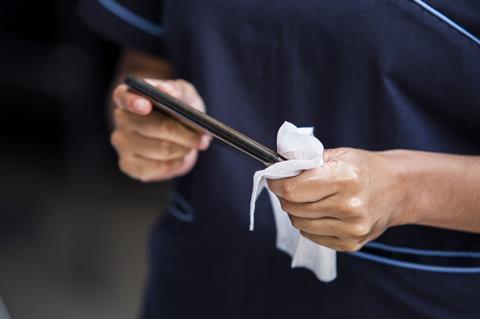The Covid-19 pandemic has boosted the unnecessary use of antimicrobial chemicals linked to health problems, antimicrobial resistance, and environmental harm, scientists warn.

More than two dozen scientists contributed to a critical review in Environmental Science & Technology, detailing how quaternary ammonium compounds (QACs) are increasingly marketed and used in home, healthcare, education, and workplace settings despite the availability of safer alternatives and in some cases limited evidence of reduced disease transmission.
“Disinfectant wipes containing QACs are often used on children’s school desks, hospital exam tables, and in homes where they remain on these surfaces and in the air,” said Courtney Carignan, a co-author and assistant professor at Michigan State University.
“Our review of the science suggests disinfecting with these chemicals in many cases is unhelpful or even harmful. We recommend regular cleaning with soap and water and disinfecting only as needed with safer products.”
Antimicrobial resistance
Human studies have found associations between QACs and asthma, dermatitis, and inflammation. Laboratory animal studies also raise concerns about potential links to infertility, birth defects, and more. Further, there has been evidence dating back to the 1950s that QACs contribute to antimicrobial resistance, making certain bacteria species resistant both to QACs themselves and to critical antibiotics.
“It’s ironic that the chemicals we’re deploying in vain for one health crisis are actually fueling another,” said Erica Hartmann, a co-author and professor at Northwestern University.
“Antimicrobial resistance was already contributing to millions of deaths per year before the pandemic. Overzealous disinfection, especially with products containing QACs, threaten to make it worse.”
QACs are increasingly used in disinfectant solutions, wipes, hand sanitizers, sprays, and foggers, and are also being incorporated into personal care products, textiles, paints, medical instruments, and more. Since the pandemic, levels of these chemicals in the environment and our bodies have increased in parallel.
Soap and water
One of the most common QACs is benzalkonium chloride, but others can be identified on ingredient labels with names that end in “ammonium chloride” or similar. However, disclosure and regulation of QACs varies widely. For example pesticide labels are required to list QACs but paint labels are not. Most QACs are not regulated at all, nor are they comprehensively screened for health hazards.
The scientists recommend eliminating uses of QACs that are either unnecessary or where their effectiveness has not been demonstrated. For example, disinfection with QACs often has no benefit over cleaning with plain soap and water. Other recommendations include requiring full disclosure of QACs in all products and closely monitoring their levels in people and the environment.
“Drastically reducing many uses of QACs won’t spread COVID-19,” said Carol Kwiatkowski, a co-author and scientist at the Green Science Policy Institute. “In fact, it will make our homes, classrooms, offices, and other shared spaces healthier.”







No comments yet